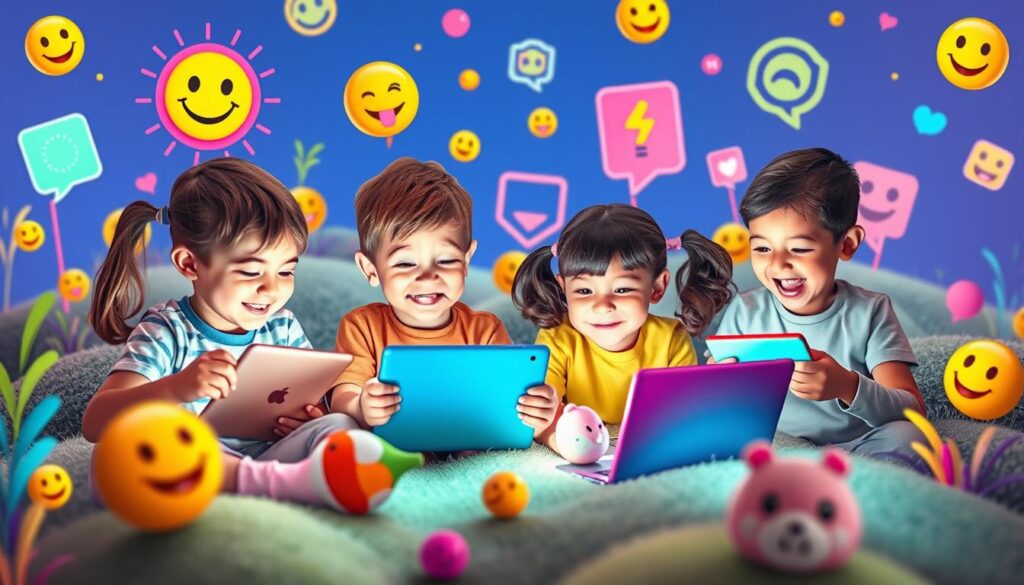Table of Contents
- The Rise of Social Media for Children
- Pros and Cons of Social Media for Kids
- Safe Social Media for Kids: What To Look For
- Social Media for Children: Age Appropriateness and Guidelines
- Parental Guidance: Monitoring and Communication
- Legislation and Social Media Use Among Minors
- Creating a Balanced Approach to Social Media for Children
- Case Studies: Countries with Different Approaches
- Conclusion
- FAQ
The discourse on social media for children has escalated into a pivotal debate within our contemporary society. As minors increasingly immerse themselves in diverse platforms, we are compelled to question whether we should permit its use or prohibit it altogether. This inquiry is deeply relevant, given the varied perspectives of parents, educators, and policymakers, who collectively influence the realm of social media for kids. Insights from esteemed organizations, such as the American Academy of Pediatrics, illuminate the multifaceted implications of these platforms, underscoring both their potential advantages and drawbacks. This article aims to delve into the current global scenario of social media usage among minors, striving to offer a nuanced perspective on whether children should engage in these digital interactions.
Key Takeaways
- Debate exists on whether to allow or ban social media for kids.
- Increasing engagement of children on various platforms raises concerns.
- Parent and educator opinions shape social media guidelines.
- Resources from experts highlight risks and benefits.
- Understanding social media’s role is essential for informed decisions.
- Privacy Settings: It is crucial to verify that the platform offers comprehensive privacy options, enabling us to dictate who can access our children’s content and engage with them.
- Content Moderation: Platforms should actively monitor content to prevent the dissemination of harmful material to young users.
- Age-Appropriate Interactions: Opt for platforms that are specifically designed for children, ensuring safe and constructive communication.
- Educational Tools: Platforms that integrate educational tools can significantly enrich our children’s online experience.
- Time Management: Restricting daily screen time fosters a balanced lifestyle, enhancing both online and offline engagement.
- Content Sharing Guidelines: Define explicit rules regarding suitable content for sharing. Discuss the criteria for appropriate and safe online material.
- Encouraging Open Communication: Establish a supportive environment where children can freely discuss their online experiences with us.
- Educating About Privacy: Instruct children on the significance of privacy and the nuances of privacy settings on various platforms.
- Encourage regular discussions about their social media experiences.
- Set clear rules about acceptable online behavior.
- Utilize parental control tools that can help keep track of their activities.
- Foster an environment where children feel comfortable reporting negative experiences.
- Modeling exemplary behavior: Children’s online conduct is heavily influenced by the actions of adults, serving as their role models.
- Engaging in regular dialogues: Conversations about their digital experiences empower children to articulate their feelings and contemplate their interactions.
- Commending commendable actions: Acknowledging instances of peer support or the dissemination of beneficial information reinforces the value of positive online behavior.
- Formulating explicit guidelines: Clearly delineate the permissible times and locations for social media usage.
- Advocating for activities devoid of screens: Encouraging children to engage in hobbies and interests that do not involve digital devices helps broaden their horizons.
- Adopting time limits for minors: Allocating specific periods for social media engagement helps prevent overindulgence in digital activities.
The Rise of Social Media for ChildrenThe evolution of social media has been marked by a significant shift, particularly in the realm of children’s engagement. Platforms such as Instagram, TikTok, and Snapchat have garnered immense popularity among the younger population. Statistics indicate that a considerable percentage of children aged 8-12 are actively participating in these digital communities. This transformation signifies a paradigm shift in social media usage trends, where children now wield considerable influence over trends and interactions. The integration of children and technology has reached unprecedented levels. Digital platforms serve as conduits for creative expression, communication, and socialization, enabling children to bridge physical divides. Studies by organizations like Common Sense Media reveal that the incorporation of social media into daily routines has reshaped children’s interactions and perceptions of their social environments. The motivations behind this trend are multifaceted, ranging from the quest for social connection to the pursuit of validation and recognition through digital interactions. Grasping these dynamics is imperative as we navigate the implications of this trend for both children and society at large. Pros and Cons of Social Media for KidsIn our examination of social media’s impact on children, it is imperative to assess both its educational advantages and potential hazards. These platforms can provide unique learning avenues, yet they also harbor significant risks that parents must be aware of. Weighing the Educational BenefitsSocial media presents a plethora of educational benefits. It affords children access to a vast array of resources, enabling them to engage with content that expands their educational horizons. Research suggests that when utilized appropriately, social media can positively impact academic outcomes. It fosters creativity as children collaborate and exchange ideas, thereby becoming an integral part of their educational journey. Recognizing Potential RisksHowever, it is crucial not to overlook the risks associated with social media for children. The exposure to unsuitable content remains a significant concern, with children often encountering material not fitting their developmental stage. Furthermore, social media can act as a distraction, diverting attention away from academic obligations. Child psychologists stress the need to acknowledge these risks, which can manifest in decreased focus and increased social anxiety. It is our responsibility to arm ourselves with the necessary knowledge to guide children’s online interactions. Safe Social Media for Kids: What To Look ForIn the realm of safe social media for children, our attention must be directed towards particular attributes that render platforms suitable for the younger demographic. It is imperative to consider certain criteria when selecting platforms that are deemed safe for children: Entities such as the Family Online Safety Institute offer indispensable guidelines and resources. These recommendations highlight the necessity of thorough research and continuous monitoring to ensure a secure online environment for our children.
Social Media for Children: Age Appropriateness and GuidelinesThe determination of an appropriate age for children’s engagement with social media necessitates meticulous deliberation. Pediatric associations uniformly advocate for a minimum age of 13 for social media utilization. This criterion ensures that children possess the requisite cognitive and emotional capabilities for responsible online interactions. Parents are pivotal in setting guidelines that promote healthy digital habits. Developing Healthy Usage HabitsTo cultivate a secure digital environment, we must assist children in developing prudent usage habits. Several strategies are beneficial: Adopting these strategies will enable children to navigate the complexities of social media, prioritizing their safety and well-being.
Parental Guidance: Monitoring and CommunicationThe provision of parental guidance on social media is paramount in safeguarding children’s digital well-being. Our duties encompass the vigilant monitoring of kids online, engaging in discussions about their digital lives, and grasping the nuances of the virtual realms they explore. This proactive stance fosters an atmosphere of trust and openness, empowering children to articulate their concerns freely. Implementing various strategies can significantly enhance our monitoring capabilities. Engaging in dialogues about their social media habits is imperative. Such conversations enable us to gauge their comprehension of digital interactions and the associated risks. Below are some actionable measures we might contemplate: Insights from family therapists underscore the significance of regular communication regarding social media. Children who perceive their parents’ interest in their online activities are more inclined to make prudent choices. Demonstrating genuine concern and curiosity reinforces the value of safety and respectful behavior in their digital endeavors.
Our active involvement and guidance can profoundly impact our children’s digital experiences. By adopting a proactive stance, we contribute to their digital literacy, equipping them with the skills to navigate social media responsibly and with confidence. Legislation and Social Media Use Among MinorsThe regulatory landscape concerning minors’ social media usage is undergoing a transformative shift, underscoring the escalating concerns regarding the digital risks they face. The advent of legislation on social media for kids underscores the imperative of establishing secure digital domains for the younger demographic. Various jurisdictions are now enforcing stringent guidelines aimed at safeguarding minors’ personal data and promoting judicious online engagement. In the United Kingdom, the Age Appropriate Design Code delineates explicit standards for online platforms catering to minors. This legislation compels companies to prioritize children’s privacy and safeguard their data against exploitation. Furthermore, it mandates the implementation of age verification protocols to bar underage access to unsuitable content. In the United States, the Children’s Online Privacy Protection Act (COPPA) imposes stringent requirements on websites targeting children under 13. It necessitates the acquisition of verifiable parental consent prior to the collection of personal information from minors, underscoring the critical role of parental oversight in navigating social media regulations. Legal experts provide valuable insights into the necessity for businesses to adapt to these evolving legal frameworks. Companies are compelled to enhance transparency and deploy robust safety protocols, ensuring a secure digital environment for minors. The responsibility extends beyond legislative bodies to the platforms themselves, which must prioritize the online well-being of children.
Grasping these social media regulations facilitates our advocacy for holistic strategies aimed at safeguarding children online. It is imperative that we continue to engage in dialogues centered around the delicate balance between providing minors with access to digital platforms and ensuring their safety within these environments. Creating a Balanced Approach to Social Media for ChildrenIn the current digital epoch, achieving a harmonious balance in social media usage is paramount for nurturing a salubrious digital environment for our progeny. Our objective is to fortify relationships that transcend mere connectivity, aiming for interactions imbued with substance and positivity within the digital realm. Encouraging Positive InteractionsThe promotion of positive interactions among juveniles on social media platforms can profoundly elevate their digital experiences. By fostering an atmosphere of inclusivity and benevolence, we cultivate a milieu where children perceive themselves as integral and secure. Implementing strategies such as: Setting Boundaries and Time LimitsDefining clear-cut boundaries in social media usage is indispensable for maintaining equilibrium. Effective strategies for managing screen time are imperative in today’s technologically saturated society. Some exemplary practices include: Through the promotion of positive interactions and the establishment of boundaries, we can forge an environment conducive to the flourishing of our children both in the digital and physical realms. This balanced approach to social media enables them to navigate the digital world with confidence and poise. Case Studies: Countries with Different ApproachesAcross the globe, nations employ diverse methodologies to govern children’s engagement with social media. Our investigation into these disparate strategies unveils regulatory frameworks shaped by cultural norms and societal values. In the United States, the emphasis on digital freedom often leads to a relatively unregulated online environment. Here, the onus falls on parents to oversee their children’s online interactions, promoting personal accountability. Conversely, the United Kingdom’s Online Safety Bill introduces stricter controls on social media platforms to safeguard minors. This legislation endeavors to ensure companies are liable for content that may harm children. Scandinavian nations, renowned for their forward-thinking policies, adopt a balanced stance. Sweden, for example, integrates digital literacy programs into its educational curriculum. These programs equip children with the skills to navigate social media safely and ethically. Norway, too, places a premium on parental involvement, fostering dialogue around online experiences. This approach underscores the significance of communication in safeguarding digital well-being. Our examination of these case studies underscores the efficacy of strategies rooted in cultural contexts. By dissecting these varied approaches to social media, we glean insights that can guide future policy-making and educational initiatives globally. ConclusionIn our comprehensive examination of social media’s impact on children, we have uncovered a complex interplay of risks and benefits. The perils, including cyberbullying and privacy violations, stand in stark contrast to the opportunities for socialization and educational enrichment. This dichotomy underscores the imperative for a nuanced perspective, one that weighs both sides to facilitate informed decision-making. Parents and guardians are urged to immerse themselves in their children’s digital lives. Such engagement not only strengthens communication but also cultivates prudent online behaviors. By actively participating in the digital realm, we empower ourselves to steer our children through the intricate challenges of social media, ensuring their safety and fostering their development. Our duty is to harness social media’s potential as a catalyst for positive interactions and personal growth. Recognizing the dual nature of its impact empowers us to steer our children towards a responsible and fulfilling digital existence. FAQWhat are the primary dangers of social media for kids?The primary perils of social media for minors encompass cyberbullying, exposure to unsuitable content, and privacy issues. Cyberbullying can inflict profound psychological harm, whereas inadequate privacy settings may precipitate data breaches and exploitation. Are there any benefits to kids using social media?Indeed, social media offers several advantages for children, including avenues for socialization and access to educational materials. It aids in the development of social skills and emotional intelligence by facilitating connections with peers and participation in constructive online communities. How can we ensure safe social media experiences for children?Ensuring safe social media experiences necessitates the selection of platforms with robust privacy settings, content moderation, and suitability for the child’s age. Familiarizing oneself with apps and resources from entities such as the Family Online Safety Institute can offer invaluable guidance. What are some guidelines for the appropriate age for kids to start using social media?Recommendations suggest that the optimal age for children to commence using social media typically falls between 12 to 13 years old. Nonetheless, it is imperative for parents to evaluate their child’s maturity and discuss the importance of healthy usage habits and online responsibility prior to granting access. How can parents effectively implement monitoring practices for their children’s social media use?Parents can effectively monitor their children’s social media activities by maintaining open dialogue about their online interactions, establishing clear guidelines for online behavior, and employing parental control tools to track their interactions and accessed content. What is the importance of legislation in regulating social media use among minors?Legislation plays a crucial role in regulating social media use among minors by establishing policies that safeguard children’s data privacy, implementing age verification processes, and ensuring companies are held accountable for protecting young users from harmful content and exploitation. How can we create a balanced approach to social media for children?Achieving a balanced approach to social media for children involves promoting positive online interactions, setting boundaries for usage, and teaching time management skills. By cultivating an environment that values both online engagement and offline activities, we foster healthy social media habits. |
|---|




















